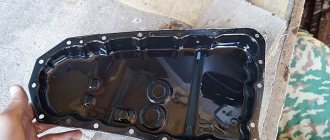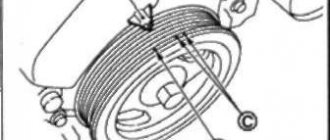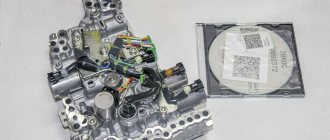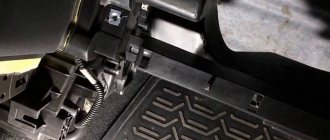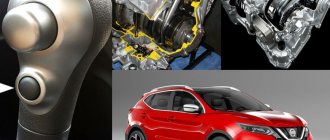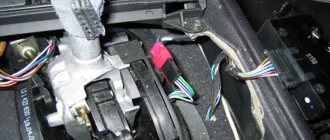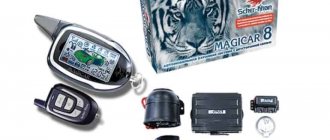A continuously variable transmission (variator) differs from other power transmission options in that it more effectively realizes the engine's potential in terms of traction. This increases efficiency and reduces emissions. Other parameters of the transmission are also important - its reliability and service life. The article will focus on the CVT of the Japanese brand Nissan.
Nissan CVT
Review
The car was first presented at the Geneva Motor Show in 2004. In 2007, Europe was literally flooded with Qashqai models of the first version. This five-door SUV came with a gasoline engine in two versions: 1.6 and 2.0 liters with 114 and 141 hp. With. respectively. The first generation had either a manual or CVT transmission. The variator on the Nissan Qashqai J10, as well as on other versions of the Qashqai, was installed by Jatco; the first generation was equipped with two different models: JF011e (RE0F10A) and JF015e (RE0F11A). Both boxes were installed with gasoline engines, the first with a volume of 2.0 liters, the second with a volume of 1.6 liters. In this form, the Nissan Qashqai was produced until 2013, taking into account restyling in 2010. Among the first generation, there was also one Nissan Qashqai automatic, on which a Jatco JF613E gearbox and a 2-liter diesel engine were installed.
For the Nissan Qashqai J10, restyling affected not only the appearance of the car, although in this regard the changes were quite significant, especially in the front part. It was after restyling that the engine line was supplemented with a 1.6-liter engine with 117 hp. With. and CVT gearbox JF015e (RE0F11A).
The extended version of the crossover – Nissan Qashqai +2 – was also equipped with a JF011e (RE0F10A) variator, but of a different modification. This is important to consider when buying used spare parts for a Nissan or not knowing exactly what kind of variator it is. Even if the transmissions of Nissan Qashqai and Nissan Qashqai+2 have the same name, their valve bodies are completely different, so these parts are not interchangeable.
The second generation Nissan Qashqai J11 has been produced since 2013; the Nissan Qashqai J11 was restyled in 2016-2017. In the second generation, in addition to engines with a volume of 1.6 and 2 liters, a 1.2 turbo engine appears, thanks to which the model becomes one of the most economical crossovers. You can buy the new second-generation Nissan Qashqai with the same Jatco CVT, but different models are suitable for different engines:
- 2 liters, gasoline (HRA2DDT and H5FT) – Jatco JF015e;
- 2.0 liter petrol (MR20DD) – Jatco JF016e;
- 1.6 liter diesel (R9M) – Jatco JF017e.
Each transmission model involves one or more modifications. A two-liter gasoline engine in a car with front-wheel drive is equipped with a modification of the 31020-3VX2A gearbox, and for an all-wheel drive crossover with the same engine, a variator 31020-3VX2C is provided. The first specified version of the 1.2 turbo engine is equipped with a 31020-X426A transmission, and the second is equipped with a 31020-X426B. At the same time, we should not forget that modifications of the models are not interchangeable, and if repairing the variator is impossible or impractical, you need to choose a new one very carefully.
The easiest option in this regard for owners of a Nissan Qashqai is a second-generation automatic with a 1.6-liter diesel power unit. There is only one variator for this model, modification 31020-3WX1B.
Among the Nissan Qashqai J10 models presented on the Russian used car market, the Nissan Qashqai with a two-liter engine is the most popular. And it’s not even a matter of larger volume - after all, such a volume is more suitable for those who like to press the gas and stomp along the highway, and Nissan is often bought for driving around the city with its traffic jams and traffic lights. But the service life, as well as the reliability, of the JF011e variator is greater than that of the JF015e, which has been installed on a 1.6-liter car since 2011. The second variator turned out to be too small for a rather heavy crossover, so its durability is one and a half to two times less.
What are the significant differences between a regular automatic transmission and a CVT?
If you look at the use of transmissions from the perspective of a simple layman, then there will be no visually noticeable differences. All the same operating modes, which are the same in all systems: P - means parking, D - forward, N - neutral, R - reverse, and so on. If the driver wants to use manual control of the gearbox, it simulates upshifts and downshifts. In addition, there may be a sport mode and an economical mode.
But the CVT variator can withstand high loads worse than all types of automatic transmission mechanisms. If the driver of a Qashqai car starts abruptly, the unit may break. Therefore, car owners drive off in a smooth mode, gradually increasing the load on the power unit. If you do not follow this mode, then a malfunction of the mechanism will not take long to occur.
For example, we can cite the popular street racing, which is currently so popular among young people. On their cars, the variator fails after sixty thousand kilometers.
The CVT of Nissan J10 and J11 brands must be warmed up in cold weather. In addition, they are extremely sensitive to the presence of lubricant, and one should take into account the fact that at low temperatures the oil is poorly distributed throughout the gearbox. It will not be possible to warm up a car with a CVT variator by analogy with a conventional automatic transmission.
A car with a CVT needs to be warmed up and then switched to neutral for a while, which will significantly warm up the fluid coupling. When the vehicle starts moving, you must be careful and do not overload the variator for the first five kilometers.
In the far north, temperatures often drop below thirty degrees and drivers are advised not to drive a car with a CVT in such weather. If driving is absolutely necessary, then the car undergoes a long warm-up at idle and you need to drive carefully, without overloading the variator.
Service intervals for CVT Nissan Qashqai
According to the regulations, the transmission oil in the first generation Nissan Qashqai CVT must be changed after every 60,000 km. But, given our realities and roads, it is better to reduce the mileage between replacements to 30-40 thousand.
If the JF011e variator can be filled with NS-2 specification oil, the JF015e model only accepts NS-3 oil. CVTs JF016e and JF017e require only clean gear oil, they are very sensitive to this. According to the user manual, replacement is carried out every 90,000 km, but do not forget that the regulations did not take into account the quality of our roads, so the oil needs to be changed more often - once every 50-60 thousand kilometers.
In the JF016e and JF017e variators, instead of the step motors that were once in use, gear shifting is carried out by salesnoids-regulators, which are too easily clogged with chips and dirt. Poor quality oil, as well as changing it too infrequently on these CVT models, can lead to the need to change the entire valve body, the cost of which is almost the same as the cost of the CVT. So if the reverse speed suddenly disappears on a CVT Nissan, then it’s definitely time to change the oil.
When changing the lubricant, do not be lazy about removing the pan - without this, it will not be possible to thoroughly clean the transmission of used oil. It is also important to clean the magnets from metal shavings so that they do not interfere with the normal operation of the variator in the future.
You will need 2 canisters of 4 liters of new oil - the box includes 7.5 liters of lubricant. Please ensure that the oil meets the quality requirements specified by the manufacturer.
It is possible to change the transmission oil yourself, especially if you have the necessary tools and gaskets. But if you don’t have confidence in your abilities or desire to do this business, it’s better to contact the service. They will do everything right, quickly and inexpensively. At the same time, it would be useful to diagnose the variator, because the main problems can only be seen with its help.
CVT Nissan
Summarize:
Nissan Qashqai, regardless of generation, be it right-hand drive or for the US market, is a fairly reliable car. Don't be afraid of the Nissan Qashqai CVT. The most important thing is the mandatory oil change in the variator, at least at least once every 40,000 km. In this case, it is necessary to remove the crankcase and clean the magnets from chips. These operations significantly extend the service life of the variator, regardless of its model. In addition, this procedure is inexpensive. The cost of changing the oil is only 3,000 to 4,000 rubles. At the first symptoms of a malfunction with the variator, you need to immediately come to a specialized service for diagnostics, and in this case there is a high probability of getting away with inexpensive repairs.
Main problems and breakdowns of the variator
Despite the distrust of such a gearbox and the eternal questions on forums about whether the CVT is reliable, there are not many problems with the transmission on the Nissan Qashqai. And they mainly relate to overheating or untimely oil changes.
To avoid them, first of all, you need to call for a service on time or change the lubricant yourself and clean the transmission from carbon deposits and chips.
Overheating is also easy to avoid if you know what to look for. The operating temperature of the variator is 75-85 degrees, it can withstand 120, but only under short-term loads. But it’s not worth taking risks with the temperature. The transmission is cooled using a radiator, which is located in front of the main radiator that cools the car's engine. Due to its location, the first radiator becomes dirty quite quickly, after which problems with the radiator overheating begin. If you pay attention to the cleanliness of the radiator and remove contamination in a timely manner, you don’t have to worry about too high a temperature.
The main types of variator malfunction in Nissan Qashqai:
- Oil pump valve stuck. While driving, this results in the car jerking when the gas pedal is pressed smoothly.
- Poor quality or defective bearing. At the same time, the device emits an unpleasant and noticeable hum. But the same symptom also occurs when driving during testing (if the oil has not been changed for too long), and when the variator overheats. The problem is that you can find out exactly what the reason for the extra sound is only at a service center. Therefore, if changing the transmission oil does not help, you need to urgently contact a specialist workshop.
The question often arises of how to check the variator for breakdowns if nothing hums or jerks in the car. The fact is that damaged parts are visible only when the variator is defective, so the best solution would be periodic diagnostics at a service station. And if with old first-generation models you can still try to go to very handy and knowledgeable garage workers, then with later versions it is better not to risk it: here you will need not only knowledge of how to remove the dipstick, but also special technical and software and the ability to use it correctly all this wealth. So it’s best to leave the maintenance of more recent and delicate modifications to the professionals.
Special attention should be paid to the used CVTs JF016e and JF017e. The calibration value module was not installed in these models. The disk from which the calibration values were loaded at the factory was not given to the owner of the car upon purchase. So is it worth buying a used contract CVT JF016e or JF017e and risk not finding a service capable of calibrating it? It makes sense to make a purchase only for spare parts - if removed from a damaged car without calibration data, it simply will not work.
How to check the oil in a Nissan Qashqai variator
In order for the fluid level in the variator to be checked accurately on a Nissan Qashqai, place the car on a flat horizontal surface. The engine should be running at idle speed, i.e. Do not turn off the engine. Without releasing the brake pedal, you should sequentially move the selector through all positions - P, R, N, D. The delay in each position should be about 5-10 seconds.
After this run, you must set the selector to mode P, after which you can release the brake pedal.
Get out of the car and open the hood. You need to remove the dipstick from the variator filler neck. For those who have never done this, you should know that the neck is marked with the inscription “TRANSMISSION”, and on some modifications - CVT. To release the probe, press the lock on the probe and unlock it.
If you crawl under the hood empty-handed, you'll have to return to the car and grab a rag. The dipstick needs to be wiped dry. Make sure that there are no small particles of matter left on it. The rags must be clean and dry to prevent the ingress of dirt and water. It is better not to carry out the test during rain or snow, which can also lead to moisture getting into the liquid.
After cleaning the dipstick, it should be lowered back into the neck until it stops, leave for a short time and remove the dipstick again. Watch the latch: it should be positioned so that the probe does not snap into place. At the end of it you will see marks. They indicate the level. This is how the fluid level in the variator is checked on a Nissan Qashqai.
Normally, the liquid reaches an average value between the minimum and maximum marks marked on the surface of the dipstick, i.e. the end of the oil part is located in the hot range. If you don’t see such a mark on the dipstick, then look for marks of a different kind. It could be:
"sores" and problem areas of Nissan Qashqai (Nissan Qashqai J10) with mileage
* add - 1pt; * don't - full - max. After checking, lower the dipstick back into the neck until it stops so that the latch engages. This completes the check.
Basic recommendations for use
Recommendations for using a CVT on a Nissan Qashqai are not very different from the rules for using a conventional automatic transmission:
- despite the fact that the Nissan Qashqai is an SUV, you should not test the strength of the transmission by driving in mud or deep wet snow - this leads to overheating of the transmission and rapid breakdown;
- On a Nissan Qashqai with a CVT, you cannot tow another vehicle or trailer with a large weight - the transmission is simply not designed for such loads.
The reliability of the variator largely depends on the model. As a rule, the resource and belt of the variator are designed for 200,000 km (except for the JF015e, the resource of which can be exhausted after 100,000 km), so when buying a Nissan Qashqai with mileage, you should definitely pay attention to the latter. If the resource of the variator has already been exhausted by 70-80%, you can demand a good discount from the seller, otherwise this part will soon have to be replaced at your own expense. The warranty period ends after 100,000, so when buying a new car you don’t have to worry about this – the variator will definitely go that long.
When choosing a Nissan Qashqai model, you should not ignore the reviews of the owners - it is from them that you can learn about the weak points of the car that you will need to pay attention to during operation. And it’s better to call for service sooner rather than later – when you can get by with an inexpensive repair rather than buying a new part.
Jatco, manufacturer of automatic transmissions
The company is a leader in its field and confidently competes with other manufacturers Aisin and ZF. The concern's products are used by automobile companies from the USA, Japan, Europe and South Korea, which produce high-quality cars. Today, most of the assets belong to Nissan and therefore Jatko can rightfully be called a subsidiary of the famous Japanese manufacturer.
The company's products are popular all over the world and are installed on such well-known car brands: Renault, Honda, Mitsubishi, Suzuki, GM and VAZ.
The most common malfunctions of Jatko boxes are:
- Oxidative processes occurring at the contacts of control solenoids. Naturally, they cause breakdowns associated with gear shifting. Usually the defect occurs after a run of two hundred thousand kilometers.
- The valve body channels become clogged with harmful impurities and low-quality oil.
- The wiring connecting the machine’s electronics and other units is damaged. Typically, failure occurs under the influence of an aggressive environment.
- Wear of gaskets and seals leads to leaks. This often occurs due to a drop in the oil level in the system, so the owner needs to monitor it and top it up in a timely manner.
- Voltage defects in the on-board network are detected using the ECU and the fault is promptly corrected.
- On cars with low ground clearance, damage to the crankcase cover is common. This leads to negative consequences in the operation of the machine’s oil system.
Nissan vehicles cope with other problems, which cannot but please their car owners.
